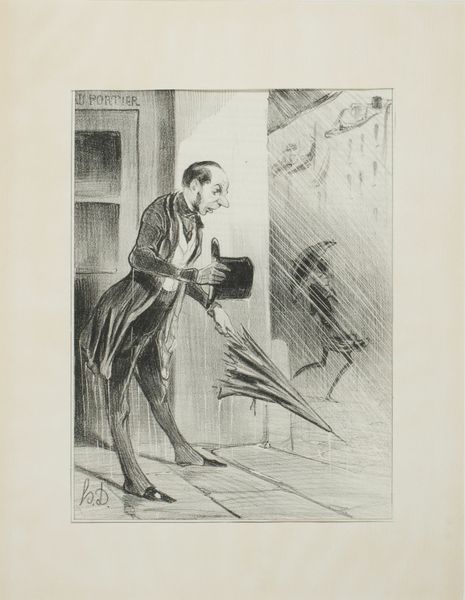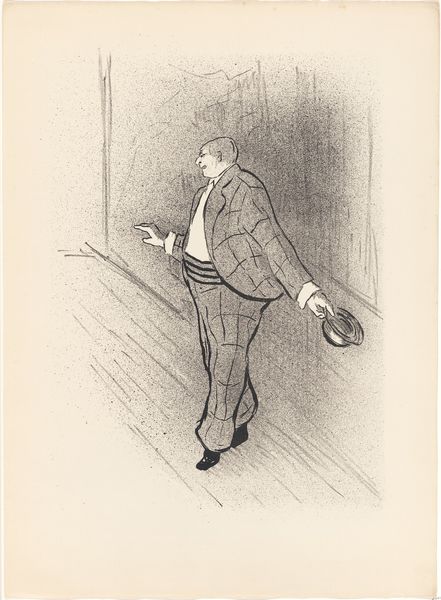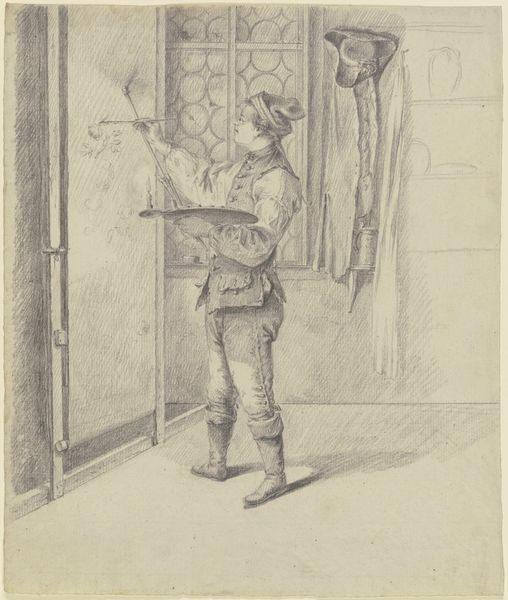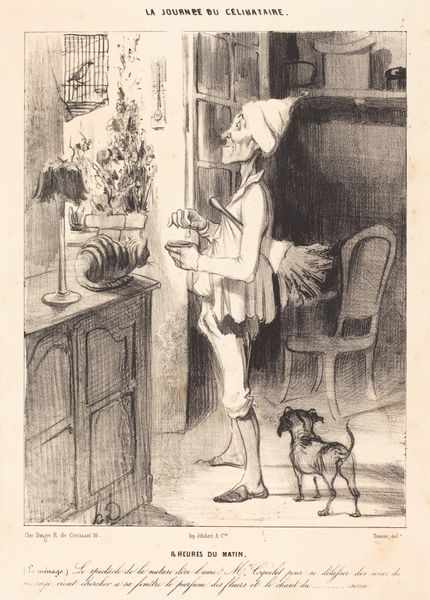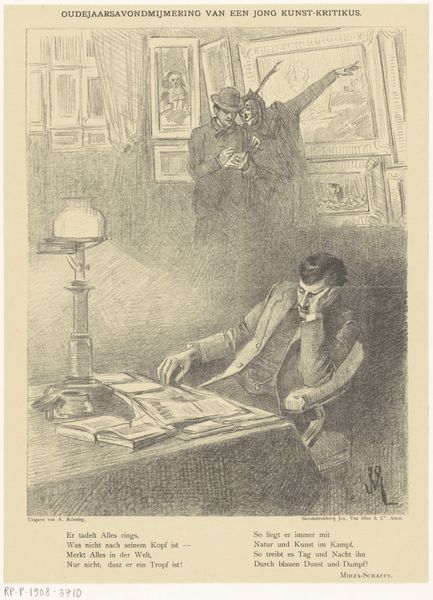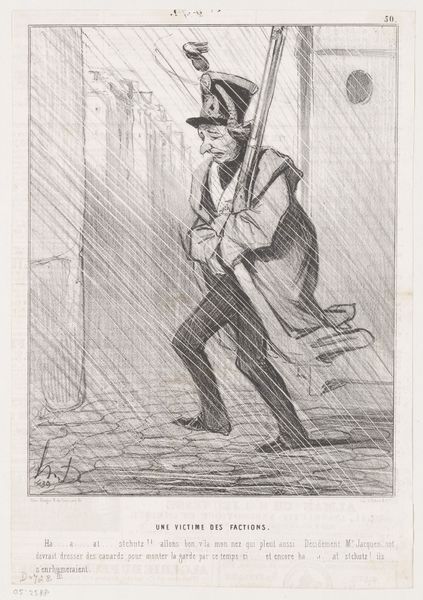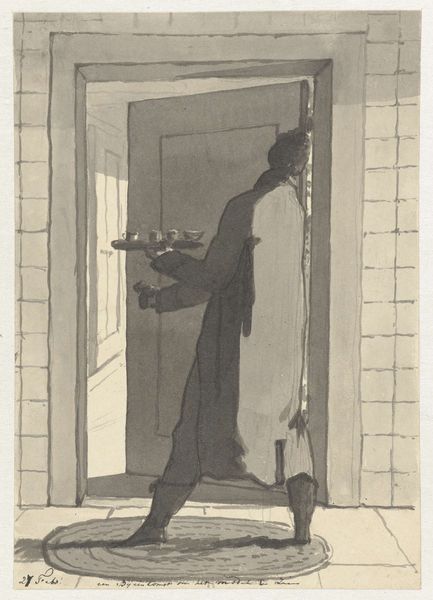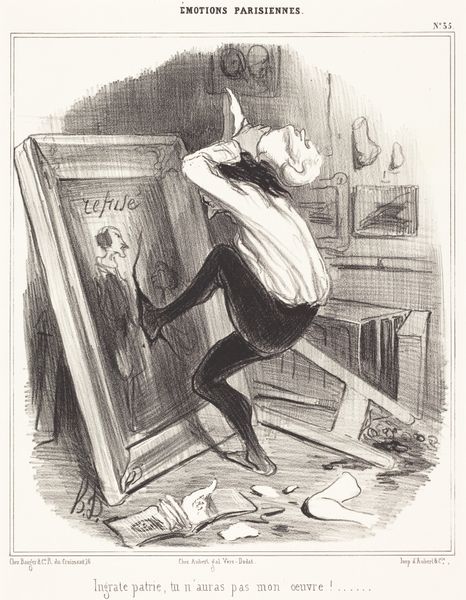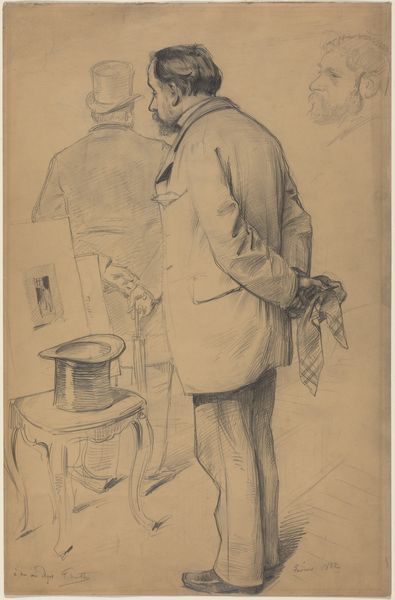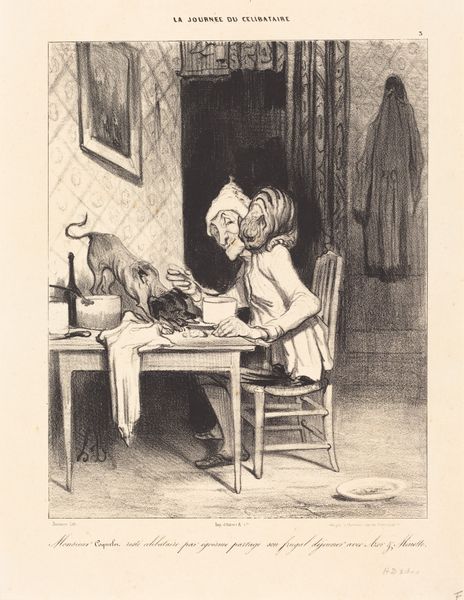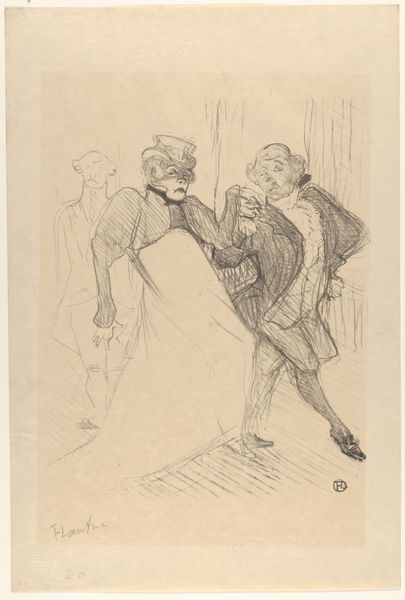
drawing, lithograph, print
#
drawing
#
lithograph
# print
#
caricature
#
pencil sketch
#
figuration
#
romanticism
#
cityscape
#
genre-painting
Copyright: National Gallery of Art: CC0 1.0
Editor: This lithograph, "C'est unique! j'ai pris quatre tailles…" by Honoré Daumier, created in 1840, depicts a man peering into a shop window displaying corsets. The image has this almost satirical, cynical tone. What do you see in this piece? Curator: This work speaks volumes about the societal pressures placed on women in 19th-century France. The corsets represent not just fashion, but a restrictive ideology controlling female bodies and, by extension, female agency. Daumier, through caricature, critiques the male gaze and its role in objectifying women. Consider how the man's exaggerated features emphasize this power dynamic. Does it perhaps strike you as an example of male privilege at work? Editor: It does now! The man almost looks like he’s leering at them, doesn’t he? The way the corsets are displayed, they seem like objects of desire. Curator: Precisely. Daumier’s genius lies in subtly embedding these socio-political commentaries within seemingly mundane scenes. The title, "It’s unique! I took four sizes...", suggests an absurd level of commodification, treating women’s bodies as if interchangeable. He's not simply making a joke; he is laying bare the problematic assumptions of the patriarchy. We must examine the ways in which art reflects and reinforces societal power structures. How does this influence your appreciation of it now? Editor: It’s made me think about how consumerism is nothing new, it’s always been around. Thanks for the background and perspective. Curator: And thank you for making that important connection. Recognizing art as a social commentary gives the artwork an undeniable powerful context.
Comments
No comments
Be the first to comment and join the conversation on the ultimate creative platform.

